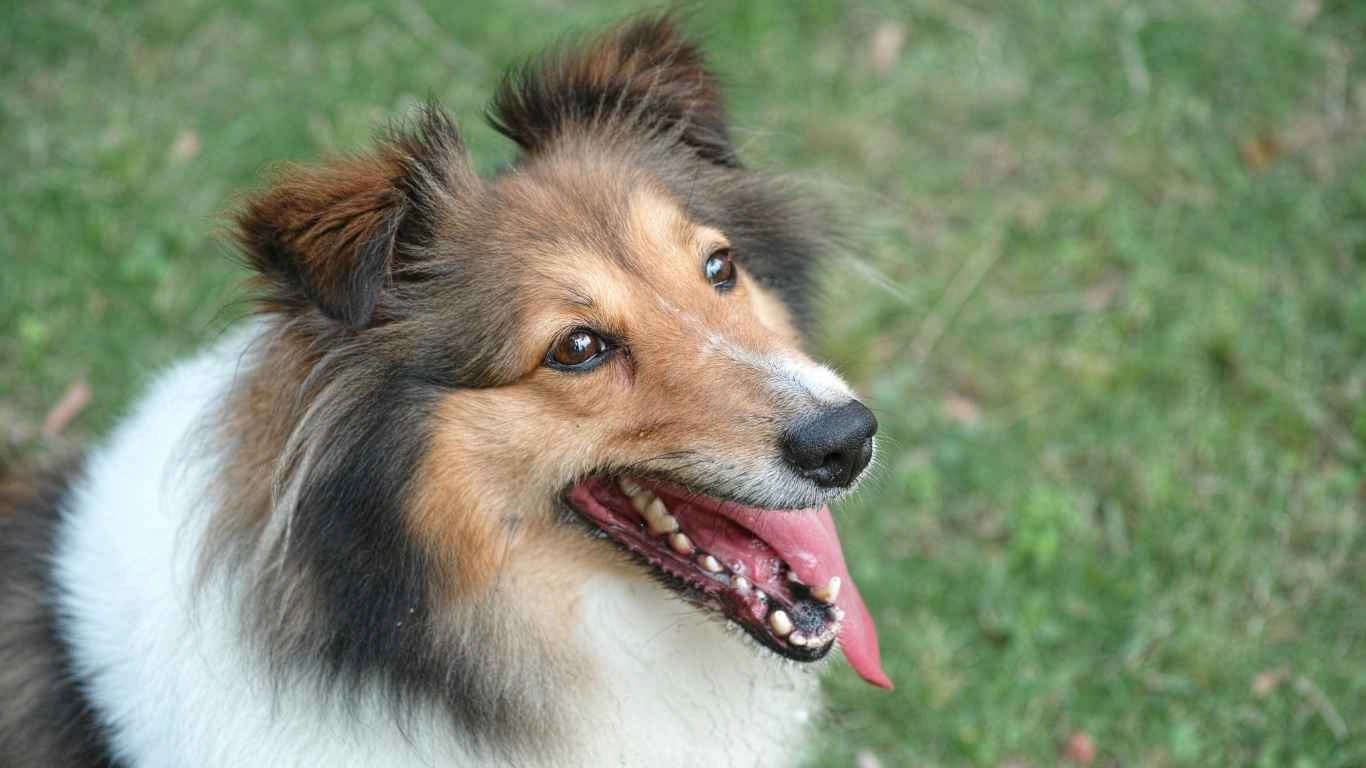Best Dog Nutrition Tips to Boost Your Pup’s Health Naturally
When it comes to caring for our beloved dogs, one of the most important aspects to consider is their nutrition. As an Animal Care Specialist with years of experience in pet clinics and shelters, I’ve seen firsthand how the right diet can transform a dog’s health and well-being. The key to ensuring your dog is happy, healthy, and full of energy lies in providing them with the best dog nutrition. But with so many different brands, ingredients, and types of food out there, it can be overwhelming for pet owners to know where to start. Don’t worry—I’m here to break it down for you in a way that’s easy to understand and will help you make the best choices for your furry friend.
The Importance of Good Nutrition for Your Dog
Good nutrition is the foundation of your dog’s health, just like it is for humans. Think of it this way: your dog relies on the food you provide to fuel their daily activities, support their immune system, and maintain a healthy weight. A proper diet can boost energy levels, improve coat condition, and reduce the risk of chronic diseases. On the other hand, poor nutrition can lead to a range of health problems, from digestive issues to obesity, and even shortened lifespans.

What Does “Best Dog Nutrition” Really Mean?
When we talk about the best dog nutrition, we’re referring to a balanced and well-rounded diet that supports all of your dog’s nutritional needs. Dogs need protein, fats, carbohydrates, vitamins, and minerals to stay healthy. But the specific requirements vary based on factors like age, size, activity level, and health condition. For example, a growing puppy has different nutritional needs than an older dog, and a highly active dog needs more energy from food than a couch potato pup.
It’s essential to understand that there’s no one-size-fits-all approach to dog food. The best dog nutrition is personalized to your pet’s unique needs. This might mean choosing food with a higher protein content for an active dog or opting for lower-fat options for a dog that’s struggling with weight management.
Types of Dog Food: What’s Best for Your Dog?
Now that we’ve talked about why nutrition is so important, let’s dive into the different types of dog food available. When it comes to the best dog nutrition, you’ve got several options, each with its own benefits. Here’s a breakdown of the most popular types:
- Dry Dog Food (Kibble): This is the most common type of dog food. It’s easy to store, convenient, and typically more affordable than wet food. However, it can be less palatable for picky eaters, and it’s important to ensure the food you choose is made with high-quality ingredients.
- Wet Dog Food (Canned): Wet food is often more appetizing to dogs because of its higher moisture content. It’s a good option for dogs who have trouble chewing or need to stay hydrated. However, it can be more expensive than dry food and needs to be refrigerated after opening.
- Raw Dog Food: Raw diets are becoming more popular due to their natural appeal. This type of food typically includes raw meat, bones, and vegetables. While it can be highly nutritious, it’s also more time-consuming and expensive to prepare. It’s important to do thorough research and consult a vet if you’re considering switching to a raw food diet.
- Home-Cooked Dog Food: Some pet owners prefer to cook for their dogs to ensure they’re getting the freshest ingredients. If done correctly, home-cooked meals can be a great option, but it’s crucial to get the balance right to avoid nutrient deficiencies. A consultation with a vet or a pet nutritionist is highly recommended if you choose this route.
What to Look for in the Ingredients
When selecting dog food, always check the ingredients list. The first few ingredients should be high-quality proteins, such as chicken, beef, or fish. Protein is essential for muscle development, immune function, and overall health. Avoid foods that list fillers like corn, wheat, or soy as the first ingredient, as these provide little nutritional value and can contribute to food allergies or sensitivities.

Another key factor to consider is the inclusion of essential fatty acids, which promote healthy skin and coat, support brain function, and boost the immune system. Look for foods that contain omega-3 and omega-6 fatty acids, typically sourced from fish oil or flaxseed.
Common Mistakes Pet Owners Make When Choosing Dog Food
One of the most common mistakes I see as an Animal Care Specialist is pet owners opting for the cheapest food available. While it may seem like a good deal, low-cost food often lacks the necessary nutrients to keep your dog healthy in the long run. Another mistake is overfeeding or underfeeding. Many pet owners don’t realize that the amount of food your dog needs can vary greatly depending on their size, age, and activity level.
Additionally, it’s easy to fall for misleading marketing on dog food packaging. Just because a brand advertises that their food is “natural” or “organic” doesn’t always mean it’s the best choice for your dog. Always do your research, read the ingredient list, and if you’re ever unsure, consult a veterinarian or pet nutritionist.
Understanding Special Dietary Needs
Every dog is unique, and some may have special dietary needs. For example, dogs with allergies, sensitivities, or specific health conditions may require specialized food. For dogs with food allergies, look for hypoallergenic dog food that avoids common allergens like beef, chicken, and dairy.

If your dog has a medical condition such as diabetes, kidney disease, or obesity, your vet may recommend a specific type of diet to manage their condition. These specialized foods are formulated to support health and prevent complications. Always consult with your vet before making changes to your dog’s diet, especially if they have health concerns.
How to Transition Your Dog to a New Diet
Switching your dog’s food can be a big decision, especially if your pup has been eating the same brand or formula for years. As someone who has worked with dogs in shelters and clinics, I can tell you that the transition process is crucial to avoid upsetting your dog’s digestive system. If you’re considering switching your dog to a new food that’s better suited for their needs, it’s important to do it gradually. Here’s how you can make the transition smooth and stress-free.
Start by mixing a small amount of the new food with their current food. Over the course of 7-10 days, gradually increase the amount of new food while decreasing the old food. This slow transition gives your dog’s digestive system time to adjust to the new ingredients. If your dog shows any signs of stomach upset, such as vomiting, diarrhea, or a decrease in appetite, slow down the transition and give their system a bit more time to adapt.

Signs Your Dog May Have Food Sensitivities
As you’re adjusting your dog’s diet, you may start to notice some changes in their behavior or physical condition. While some of these might be normal during a diet transition, other signs could indicate food sensitivities or allergies. As a pet care professional, I’ve seen it all—from mild discomfort to severe reactions—so it’s important to keep an eye on how your dog responds to their new food. Here are some common signs that your dog may have food sensitivities:
- Itchy Skin or Rash: Food allergies can often manifest as skin irritations, such as itching or rashes. If your dog is constantly scratching or biting at their skin, it could be a reaction to an ingredient in their food.
- Digestive Issues: Vomiting, diarrhea, and bloating are common signs of food sensitivities. If your dog’s stomach seems upset after eating, it could be due to a specific ingredient.
- Ear Infections: Recurrent ear infections are sometimes linked to food allergies, particularly in dogs with sensitive skin. If your dog is frequently shaking their head or scratching at their ears, it’s worth considering a dietary cause.
- Excessive Gas: While all dogs have gas from time to time, persistent or foul-smelling gas can indicate that their digestive system is struggling with certain foods.
If you notice any of these symptoms, it’s a good idea to speak with your veterinarian. They can help you pinpoint the problem and recommend the best course of action, whether that means changing foods or investigating further for underlying health issues.
Choosing the Best Dog Food for Puppies
As an Animal Care Specialist, I’ve worked with countless puppies, and one of the most common questions pet owners ask is, “What’s the best food for my puppy?” Puppies are growing fast, and they have specific nutritional needs to support their development. The best dog nutrition for puppies is different from adult dogs because they need higher levels of certain nutrients, especially protein, fat, and calcium. Here’s what you need to know to choose the right food for your growing pup.
Look for foods that are specifically labeled as “puppy food” or “growth formula.” These foods are designed to meet the unique needs of puppies and are typically higher in protein and fat to support their energy levels and growth. Be sure to check the label for the appropriate nutrient breakdown, as puppies require more calories per pound of body weight than adult dogs. If you’re unsure which brand to choose, a quick chat with your vet can help guide you to the best option for your puppy’s breed and size.

Do Puppies Need Special Ingredients?
Yes, they do! Puppies have higher energy requirements and need food rich in nutrients like DHA (Docosahexaenoic acid), which is essential for brain and eye development. It’s typically found in fish oils and other marine sources. You’ll also want to ensure that the food you choose contains a balanced amount of calcium and phosphorus, which are vital for bone growth and strength.
As much as we love to spoil our puppies with treats and special meals, be mindful of how much you’re feeding them. Overfeeding during their growth phase can lead to obesity or cause musculoskeletal problems, especially in large breeds. The key is moderation—follow the feeding guidelines on the food package and adjust based on your puppy’s activity level and growth rate.
Best Dog Nutrition for Senior Dogs
As your dog ages, their nutritional needs will change. Senior dogs require a diet that supports their slowing metabolism, maintains a healthy weight, and provides joint and muscle support. As an Animal Care Specialist, I’ve seen how the right food can make a world of difference in a senior dog’s quality of life. Here’s what to look for in the best dog nutrition for older dogs:
- Lower Calories: Senior dogs tend to be less active, so they may need fewer calories to maintain a healthy weight. Overweight senior dogs are more prone to joint problems, diabetes, and other health conditions, so controlling their calorie intake is important.
- Joint Support: Many senior dogs suffer from arthritis or other joint issues. Look for foods that contain glucosamine and chondroitin, two ingredients that can help support joint health and reduce pain and inflammation.
- High-Quality Protein: While older dogs don’t need as much protein as puppies, they still require high-quality sources of protein to maintain muscle mass and strength. Choose foods that contain real meat (not by-products) as the first ingredient.
- Digestive Support: As dogs age, their digestive system may become more sensitive. Look for foods that contain prebiotics and probiotics to promote healthy digestion and improve nutrient absorption.

Remember, just like with puppies, it’s important to consult with your vet before making any changes to your senior dog’s diet. They can recommend the best food based on your dog’s health condition, weight, and activity level.
Managing Your Dog’s Weight with the Right Nutrition
As an Animal Care Specialist, I’ve seen firsthand how challenging it can be to manage a dog’s weight, especially when they’re not getting the right nutrition. Obesity is one of the most common health problems I encounter in dogs, and it’s not just about appearance—it can have serious consequences for your dog’s overall health. From joint problems to heart disease, extra weight can significantly shorten your dog’s lifespan. So, how can you ensure your dog maintains a healthy weight? It all starts with the right food, portion control, and exercise.
The best dog nutrition for weight management focuses on providing balanced meals that are lower in calories but still full of nutrients. Look for foods that contain high-quality protein, which helps build and maintain muscle mass while keeping your dog feeling full. You should also choose foods with a good balance of fiber to support digestion and help control hunger.

Portion Control: How Much Should You Be Feeding Your Dog?
One of the most important aspects of managing your dog’s weight is proper portion control. Even the healthiest food can lead to weight gain if you’re overfeeding your dog. Each dog’s calorie needs are different, depending on their size, age, activity level, and metabolism. That’s why it’s essential to follow the feeding guidelines on your dog’s food packaging and adjust based on their individual needs.
As a rule of thumb, measure your dog’s food to avoid giving them too much. It’s easy to overestimate the amount you’re feeding, especially when you’re busy. Regularly check your dog’s weight and body condition, and adjust their food intake if needed. If you’re unsure, consult your vet—they can help determine the ideal weight for your dog and offer tailored feeding advice.
Special Diets for Dogs with Health Issues
In my experience, many dogs in shelters and clinics are on special diets due to various health conditions. Whether it’s allergies, kidney disease, or diabetes, certain medical conditions require specialized dog food to manage symptoms and promote healing. If your dog has a health issue, it’s critical to choose a diet that meets their specific needs. Let’s take a closer look at a few common conditions and the dietary considerations that come with them.
Dogs with Allergies or Sensitivities
Food allergies or sensitivities are more common than you might think. Dogs can develop allergies to ingredients like chicken, beef, or grains, which can lead to itching, gastrointestinal upset, and other issues. If your dog suffers from food allergies, it’s essential to find a hypoallergenic food that eliminates the offending ingredients.
Many hypoallergenic diets use novel proteins, like lamb, venison, or duck, which your dog’s immune system hasn’t been exposed to before. Grain-free diets are also available if your dog has a sensitivity to grains like wheat or corn. Always consult your vet before making a change to your dog’s diet, as they can help guide you to the best food for your dog’s condition.

Managing Kidney Disease through Diet
Kidney disease is another common condition in older dogs, and diet plays a significant role in managing it. If your dog has kidney disease, it’s important to feed them a diet that’s lower in protein, phosphorus, and sodium, while providing adequate amounts of high-quality nutrients. These specially formulated foods help reduce the burden on your dog’s kidneys, while still providing the nutrition they need to stay healthy.
It’s also important to make sure your dog stays hydrated. Dehydration is a serious risk for dogs with kidney disease, so wet food or additional water in their meals can be beneficial. Your vet will be able to recommend the best food for your dog’s specific stage of kidney disease and overall health.
Feeding Dogs with Diabetes
Dogs with diabetes require a special diet to help regulate their blood sugar levels. The best dog nutrition for diabetic dogs typically includes high-quality protein, fiber, and low levels of fat and sugar. A high-fiber diet helps slow the absorption of glucose, making it easier for your dog to manage their blood sugar levels throughout the day.
If your dog has diabetes, it’s essential to work closely with your vet to develop a feeding plan. This may involve giving them consistent meals at the same time each day to match their insulin schedule. Your vet may also recommend a specific diabetic dog food or help you find a suitable homemade option.
What’s the Best Dog Nutrition for Healthy Skin and Coat?
As someone who’s worked with many dogs in shelters, I can tell you that one of the first things people notice about a dog is their coat. A shiny, healthy coat is a sign of good nutrition, and poor nutrition can lead to dull, dry skin and fur. If your dog is suffering from skin issues like itching, dryness, or excessive shedding, it could be a sign that their diet needs some tweaking.
Essential Fatty Acids for Skin and Coat Health
The key to a healthy coat is essential fatty acids, especially omega-3 and omega-6. These fatty acids help maintain skin hydration, reduce inflammation, and promote a shiny coat. You’ll often find omega-3s in fish oils and omega-6s in plant oils like flaxseed. Many premium dog foods designed for skin and coat health will include these essential fats in their ingredients list.
If your dog is suffering from a dry or itchy coat, try a food that includes fish oil or flaxseed, or consider adding a supplement. Omega fatty acids are known for their anti-inflammatory properties, which can also help reduce the symptoms of allergies or skin conditions like hot spots or eczema.
If your dog’s coat issues persist despite dietary changes, it’s always a good idea to speak with your vet. They may suggest additional treatments or tests to determine if there’s an underlying health condition contributing to the problem.
References
Disclaimer: The content provided in this article is for informational purposes only and is not intended as a substitute for professional veterinary advice. Always consult with your veterinarian regarding any concerns about your dog’s diet, health, or nutrition.





